You'll find three exceptional plant-based musk alternatives for your homemade perfumes: ambrette seeds, angelica root, and galbanum. Ambrette seeds deliver warm, wine-like notes with floral undertones, while angelica root provides an earthy, authentic musk effect. Galbanum offers a sharp, green scent with pine undertones. All three options support sustainable, cruelty-free fragrance creation. Discover how these natural ingredients can transform your DIY perfume journey with their unique aromatic profiles.
The Magic of Ambrette Seeds in DIY Perfumes
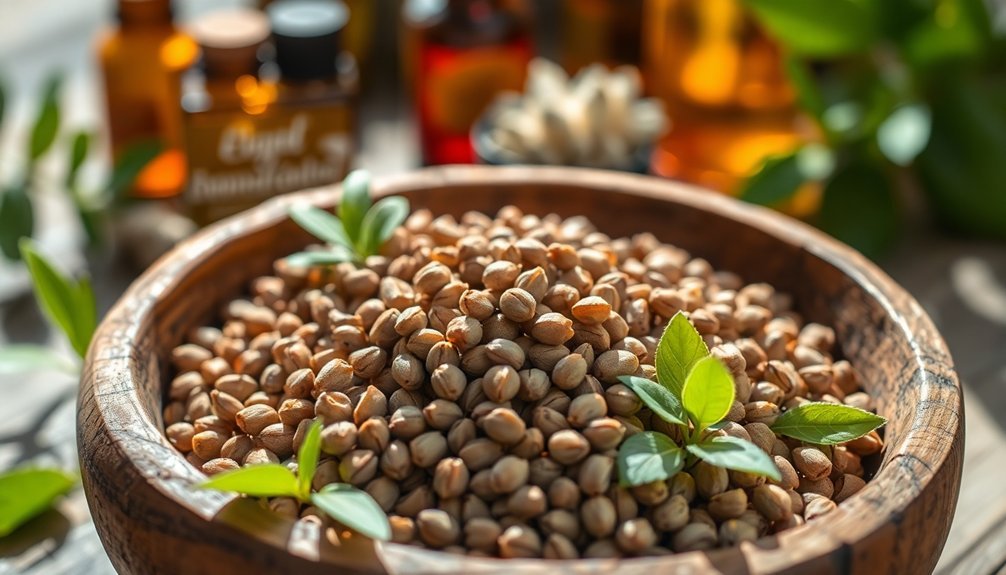
Nature's gift to perfumery, ambrette seeds offer a sustainable and enchanting alternative to traditional animal musk. You'll find these precious seeds in the Hibiscus Abelmoschus plant, known for its yellow flowers with purplish-pink centers.
When crafting your DIY perfumes, you'll discover ambrette's complex aroma profile combines warm, musky notes with hints of wine-like fruitiness and subtle floral undertones. It's perfect as a base note, blending beautifully with rose, patchouli, frankincense, and sandalwood. Due to its careful harvesting requirements and specific growing conditions, ambrette is considered one of the most rare perfume ingredients.
To preserve its aromatic properties, store your seeds in an airtight container away from heat and light.
Beyond its alluring scent, ambrette brings therapeutic benefits to your creations. Its calming properties can ease stress and anxiety, making it an excellent choice for both therapeutic and aromatic purposes in your homemade perfumes.
Creating White Musk Effects With Angelica Root
While many perfumers seek natural alternatives to synthetic white musk, angelica root offers a compelling solution with its rich, earthy aroma and clean musky undertones.
You'll find its cyclopentadecanolide content creates an authentic musk-like effect that's perfect for DIY perfumes.
When you're crafting your blend, remember that angelica root acts as both a base note and natural fixative, helping to stabilize and extend the life of your fragrance.
You'll only need a small amount, as its tenacious nature guarantees lasting impact.
However, don't use it in formulations meant for sun exposure, as it's highly phototoxic.
For best results, blend angelica root with other oils to create balanced, sophisticated fragrances that capture the essence of white musk while maintaining natural, sustainable credentials.
Many perfumers combine angelica root with high-quality ambrette seed to achieve a more authentic and complex musk profile.
Galbanum: The Green Alternative to Traditional Musk
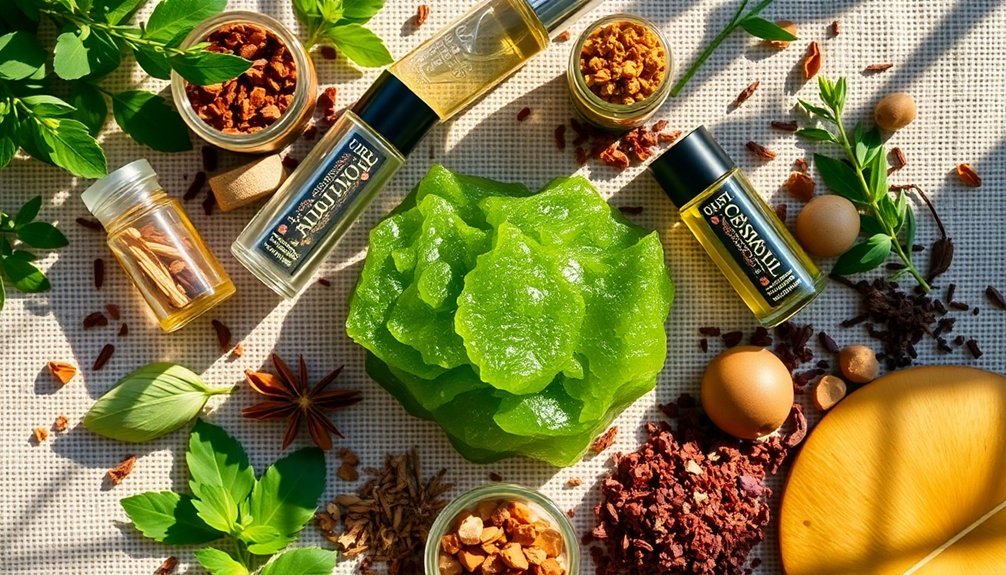
As perfumers seek sustainable alternatives to traditional musk, galbanum emerges as a distinctive green option that offers both ethical and aromatic benefits. You'll find this plant-based resin extracted from the Ferula plant through steam distillation, delivering a sharp, green scent with complex undertones of pine and earth. The rich essential oils exude naturally when incisions are made in the stems, making it an efficient harvesting process.
| Aspect | Galbanum Characteristics |
|---|---|
| Aroma Profile | Sharp, green, resinous |
| Best Pairings | Vetiver, moss, florals |
| Usage Level | Moderate – highly potent |
| Classic Examples | Chanel No. 19, Vent Vert |
| Sustainability | Cruelty-free, plant-based |
When creating your homemade perfumes, you'll want to blend galbanum carefully with citrus, floral, or woody notes. Its versatility shines in both fresh and complex compositions, while its plant-based nature guarantees your creations remain environmentally conscious and cruelty-free.
Frequently Asked Questions
How Long Do Homemade Musk Perfumes Typically Last Before Going Bad?
Your homemade musk perfumes will typically last 1-5 years if you've stored them properly. You'll get the best longevity when you keep them in dark, airtight containers away from heat and sunlight.
Can Synthetic and Botanical Musks Be Safely Mixed in DIY Perfumes?
Yes, you can safely mix synthetic and botanical musks in DIY perfumes. Just guarantee you're using stable synthetic options like Galaxolide and carefully control proportions. Test small batches first for best results.
What Equipment Is Essential for Creating Musk Alternatives at Home?
You'll need a digital scale, dark glass containers, pipettes, and measuring droppers for precise blending. Don't forget glass beakers, perfumer's alcohol, and air-tight storage vessels to create your musk alternatives safely.
Are There Specific Carrier Oils That Work Better With Musk Alternatives?
Yes, jojoba oil's your best choice for musk alternatives due to its stability and longevity. You'll also find sweet almond oil and argan oil work exceptionally well, enhancing the fragrance while nourishing your skin.
How Can I Test My Homemade Musk Perfume for Potential Skin Reactions?
You'll need to patch test your perfume on your inner arm for 7-10 days. Apply it twice daily to a quarter-sized spot, and watch for any redness, itching, or swelling.
In Summary
You'll find these three natural musk alternatives open up exciting possibilities for your DIY perfume projects. Whether you're drawn to ambrette's sweet warmth, angelica root's clean musk notes, or galbanum's green earthiness, you've got sustainable options that rival traditional musk. Start experimenting with these ingredients in small batches, and you'll discover your perfect signature scent while staying environmentally conscious.

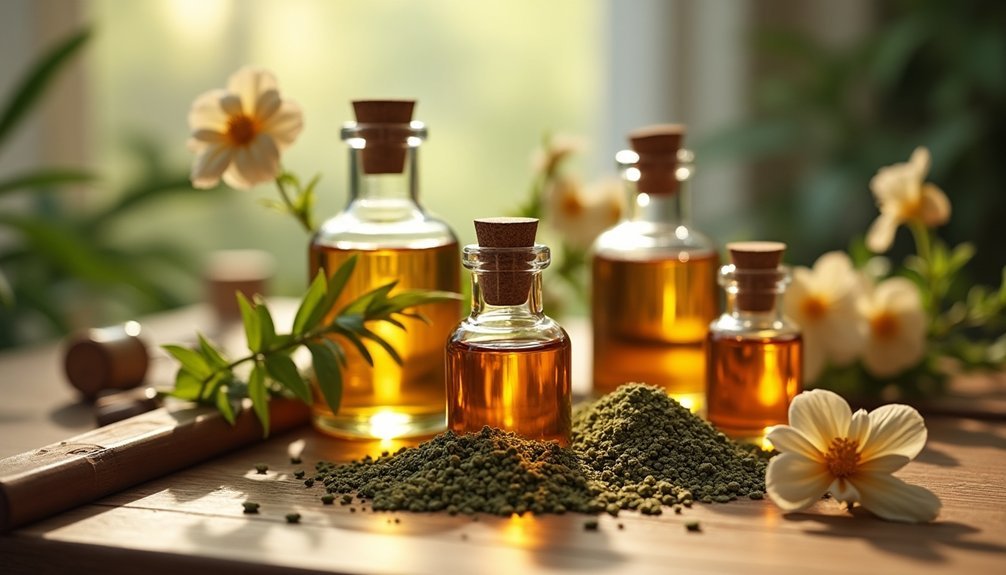
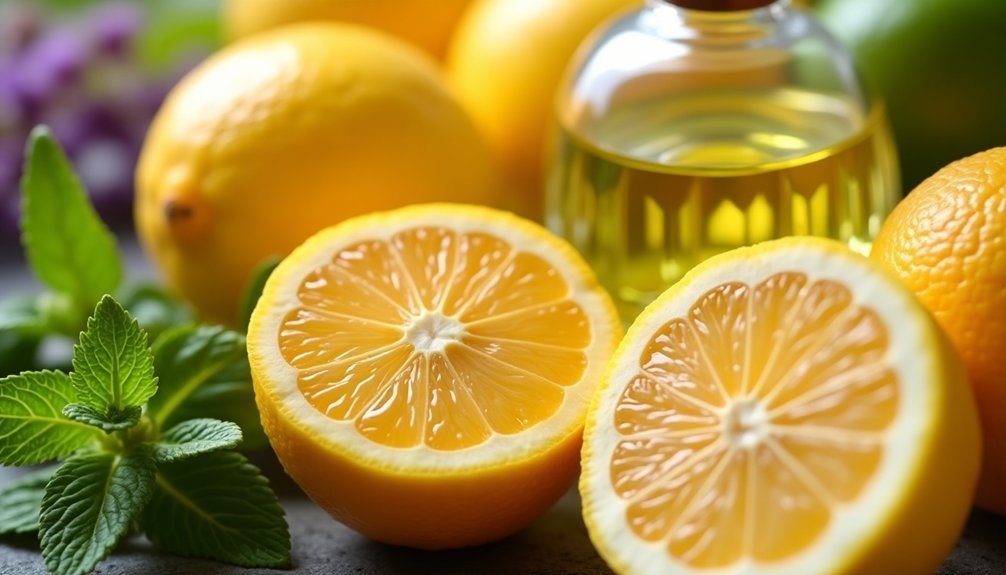
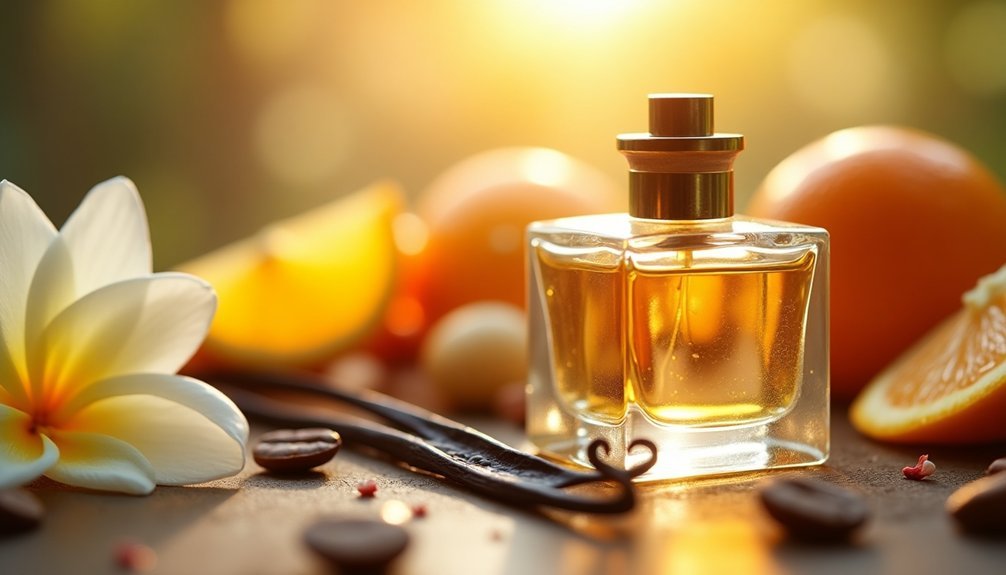

Leave a Reply